Occupational environment monitoring at a gas cylinder manufacturing factory
99,000 ₫
Note: The above price is calculated for one sample. Prices may vary depending on the area of the environment to be monitored and market fluctuations. For more accurate pricing, please refer to the price list or contact our consulting staff directly.
Monitoring the environment of gas cylinder production factories involves collecting, analyzing, and evaluating workplace factors that may be harmful to workers health.
Table of Contents
Toggle1. Overview of Gas Cylinder Manufacturing Factories
a. What is a gas cylinder manufacturing factory?
A factory that manufactures gas cylinders is a production facility that fabricates and assembles gas cylinders. Gas cylinders are devices used to store and transport liquefied gases such as propane or butane. In a gas cylinder manufacturing factory, the fabrication and packaging processes are carried out to ensure quality, safety, and compliance with international regulations on gas transport and usage.

b. Production stages in a gas cylinder manufacturing factory
Production stages in a gas cylinder manufacturing factory typically include the following:
- Material preparation: The primary material for manufacturing gas cylinders is stainless steel sheets. These sheets are cut into pieces suitable for the size of the gas cylinder.
- Shaping the cylinder: The steel pieces are formed and welded together to create the cylinder shape. The forming and welding processes are carried out precisely to ensure the cylinder is airtight and durable.
- Quality inspection: After fabrication, gas cylinders undergo quality checks, including leak testing, pressure testing, and other evaluations to ensure compliance with safety and quality standards.
- Surface treatment: Following quality inspection, the cylinders undergo surface treatment, which may include cleaning, polishing, and anti-rust coating to protect against corrosion and create a smooth, glossy surface.
- Packaging: Completed gas cylinders are packaged in secure containers to ensure safety during transportation and storage. Packaging materials are usually strong and pressure-resistant.
- Marking and labeling: Cylinders are marked and labeled with essential information, such as the manufacturer’s name, gas type, capacity, production date, and safety symbols.
- Transportation and distribution: Packaged and labeled cylinders are transported to retail outlets or distributors to meet consumer gas needs.

c. Machinery used in gas cylinder manufacturing factories
Various machines are used in gas cylinder manufacturing factories to perform fabrication and assembly processes. Some common machinery includes:
- Steel cutting and forming machines: Used to cut steel sheets into suitable sizes and form the cylinder shape.
- Welding machines: Used to weld steel pieces together to create the cylinder. Welding technologies include electric welding, MIG/MAG, TIG, or laser welding.
- Pressure testing machines: Used to test the pressure tolerance of cylinders after fabrication, ensuring compliance with safety and quality standards.
- Polishing machines: Used to clean and polish cylinder surfaces, producing a smooth, glossy finish and enhancing surface durability.
- Packaging machines: Used to package cylinders securely, often with automatic shaping and sealing functions, improving productivity and safety.
- Labeling and printing machines: Used to mark and label cylinders with essential information, including manufacturer, gas type, capacity, production date, and safety symbols.
- Other processing machines: Additional machinery such as grinders, drills, laser cutters, cap pressing machines, and valve pressing machines are used for finishing and additional fabrication steps.

d. Occupational diseases for workers in gas cylinder manufacturing factories
Workers in gas cylinder manufacturing factories may be exposed to certain occupational diseases due to working conditions and exposure to materials in the production process. Common occupational diseases include:
- Respiratory diseases: Exposure to toxic chemicals and fumes during welding, grinding, or cylinder handling can lead to pneumonia, asthma, sinusitis, and other respiratory issues.
- Skin diseases: Contact with chemicals and oils during production may cause skin irritation, eczema, or other skin conditions. Lack of protective equipment and safety procedures increases risk.
- Accidents and injuries: The use of heavy and hazardous machinery presents a high risk of accidents, including collisions, falling objects, cuts, burns, and falls.
- Pressure-related issues: During pressure testing and cylinder handling, workers may face risks of explosions or high-pressure impacts, causing injuries to ears, muscles, bones, and other pressure-related problems.
- Chemical exposure effects: Long-term exposure to welding gases, solvents, cleaning agents, and surface treatment chemicals can cause liver damage, kidney injury, nervous system damage, and other health problems.

e. Common types of gas cylinders on the market
There are many types of gas cylinders, each for specific purposes. Common types include:
- Liquefied petroleum gas (LPG) cylinders: Widely used in industry and households for cooking, heating water, heating spaces, cutting, welding, and other applications.
- Automotive CNG cylinders: Compressed natural gas (CNG) cylinders for vehicles powered by natural gas, providing a clean and environmentally friendly energy source.
- Oxy-acetylene cylinders: Used for welding, metal cutting, and other metalworking processes, combining oxygen and acetylene to create a hot flame for industrial operations.
- Propane cylinders: Another type of liquefied gas cylinder used widely in various industrial applications such as welding, heating, and processing.
- Nitrogen cylinders: Used in industries such as medicine, electronics, scientific research, and food production for cooling, drying, preservation, and liquid processing.
- Argon cylinders: Commonly used in welding and metalworking to provide a protective atmosphere that prevents air contamination and improves weld quality.
- Refrigerant cylinders: Used in refrigeration industries, including air conditioning systems, freezers, and cooling applications, to maintain low-temperature environments.
2. Overview of Occupational Environment Monitoring Services
a. What is occupational environment monitoring in a gas cylinder manufacturing factory?
Occupational environment monitoring (or workplace environment assessment) in a gas cylinder manufacturing factory involves collecting, evaluating, and analyzing measurements of workplace environmental factors to implement timely measures, minimize harmful effects on worker health, and prevent occupational diseases. Workplace environment monitoring is a mandatory requirement for gas cylinder manufacturing factories.
Monitoring plays a critical role in protecting and enhancing worker health, as employees are the primary resource generating profit for a company. Workers regularly exposed to excessive occupational hazards beyond permitted limits may suffer health impacts and occupational diseases.
REGISTER FOR OCCUPATIONAL ENVIRONMENT MONITORING SERVICE
b. An Toan Nam Viet’s occupational environment monitoring program
An Toan Nam Viet’s occupational environment monitoring program is developed by monitoring engineers specializing in labor safety and environmental protection. Aiming to ensure worker health and safety, the program uses modern measurement methods to monitor air, water, microclimate, physical factors, dust, and other elements in the workplace. This program is crucial for maintaining a safe work environment and protecting worker health.
Additionally, An Toan Nam Viet’s program plays an important role in researching and developing new solutions to improve workplace conditions. With the dedication and professionalism of its monitoring experts, An Toan Nam Viet’s exclusive program represents a breakthrough in labor safety management and environmental protection in Vietnam.

c. Standardization in occupational environment measurement procedures
Standardization in An Toan Nam Viet’s measurement procedures is critical to ensure result accuracy and reliability. The program follows recognized standards and procedures from the Ho Chi Minh City Department of Health, ensuring collected data is reliable for evaluating workplace conditions and guiding improvements to protect worker health.
These standardized procedures are conducted by highly qualified monitoring specialists with years of experience, enabling managers and experts to trust An Toan Nam Viet’s results and make precise, valuable decisions for worker health and environmental safety.
By applying standardized procedures, An Toan Nam Viet demonstrates its commitment to ensuring a safe working environment while contributing to the development and enhancement of labor safety and environmental management in Vietnam.
d. Reporting occupational environment monitoring results for gas cylinder factories
Monitoring results are prepared according to Form 04, Appendix III issued with Decree 44/2016/ND-CP and made in two copies: one sent to the workplace that signed the monitoring contract and one retained by the monitoring organization.
Retention of occupational environment monitoring results is indefinite, according to legal requirements.

e. Frequency of occupational environment monitoring according to the law
According to Clause 2 of Article 18 of the Law on Occupational Safety and Hygiene 84/2015/QH13, employers must conduct occupational environment monitoring to assess harmful factors at least once a year.
f. Deadline for submitting occupational environment monitoring reports according to the law
The deadline for report submission is before December 31 each year. Enterprises at production factories are required to submit monitoring results to the local Department of Health at the location of the main office and where workers are employed.
Whenever there are changes in technology, production processes, or upgrades that may introduce new hazardous factors, production enterprises must update occupational hygiene records with relevant data for workplace environment monitoring.
g. Penalties for violations of occupational environment monitoring by employers
According to Article 27 of Decree No. 12/2022/ND-CP dated January 17, 2022, regulating administrative penalties in labor, social insurance, and Vietnamese workers working abroad under contracts:
- Clause 2: Fines ranging from 2,000,000 – 5,000,000 VND for employers who do not publicly inform workers at the monitored workplace and relevant sites about the monitoring results and assessment of hazardous factors immediately after receiving results.
- Clause 3: Fines ranging from 20,000,000 – 40,000,000 VND for employers who fail to conduct occupational environment monitoring to control hazards affecting worker health, as required by law.
- Clause 4: Fines ranging from 40,000,000 – 60,000,000 VND for employers who collude with monitoring organizations to commit fraud in occupational environment monitoring activities, without reaching the level of criminal liability.
3. Harmful Environmental Factors for Workers in Gas Cylinder Manufacturing Factories
Workers in gas cylinder manufacturing factories may encounter various harmful environmental factors. The following are some potential factors that could affect workers’ health:
- Hazardous chemicals: Gas cylinder production may involve the use of hazardous chemicals such as welding gases, solvents, cleaning agents, and surface treatment chemicals. Inhalation or skin contact with these substances can cause irritation, inflammation, respiratory damage, and harm to the liver, kidneys, and other organs.
- Smoke and dust: Welding, cutting, grinding, and metalworking processes in gas cylinder production can generate smoke, metal dust, and fine solid particles. Inhaling smoke and dust can lead to respiratory issues such as pneumonia, asthma, sinusitis, and other respiratory system problems.
- Noise: Machinery and production processes in gas cylinder factories can generate high levels of noise, especially during welding and metalworking. Continuous and excessive noise can cause hearing problems, stress, and impact overall health.
- Temperature and humidity: Gas cylinder factories may have fluctuating temperature and humidity, particularly during welding, heat application, and treatment processes. Inappropriate temperature and humidity can cause discomfort, fatigue, and affect work performance.
- High pressure: During pressure testing and gas cylinder handling, workers may be exposed to high pressure, with the risk of explosions or pressure-related injuries.
REGISTER FOR OCCUPATIONAL ENVIRONMENT MONITORING SERVICE
4. Measures to Improve the Working Environment in Gas Cylinder Factories
To improve the working environment in gas cylinder factories and protect workers’ health, the following measures can be applied:
- Ensure proper ventilation: Provide an effective ventilation system to remove smoke, fumes, and dust during production. Use fume extraction systems, ventilation fans, and air filtration devices to minimize air pollution and maintain clean air.
- Use personal protective equipment: Ensure workers properly use personal protective equipment such as masks, goggles, gloves, chemical-resistant clothing, and safety shoes. This protects workers from direct exposure to hazardous substances and reduces the risk of injury.
- Training and safety education: Provide thorough occupational safety training and education for all workers in the factory. This includes guidance on proper equipment use, safe work procedures, accident prevention, and emergency measures.
- Conduct regular inspections and maintenance: Regularly inspect, maintain, and repair factory equipment and machinery. This ensures effective operation and reduces the risk of accidents causing harm to workers.
- Noise control: Implement noise control measures such as installing sound barriers, providing ear protection, and limiting exposure time to high noise levels. Ensure workers have sufficient rest periods to recover from noise exposure.
- Regularly conduct occupational environment monitoring in factories to collect and analyze harmful factors for workers, and then adjust to reduce risks to prevent occupational diseases.
5. Benefits of Periodic Gas Cylinder Factory Environment Monitoring
An Toan Nam Viet provides businesses with excellent benefits when using occupational environment monitoring services according to Decree 44/2016/NĐ – CP on managing and controlling harmful factors in the workplace affecting workers.
- Businesses can proactively control harmful factors in workshops or factories.
- Receive advice and recommendations to reduce harmful factors and improve workplace environmental quality.
- Indirectly protect human resources, the key factor in business development.
- Reduce the impact of occupational diseases on health, minimizing future medical costs.
- Improved worker health leads to higher product quality and ensures consistent production output.
- Ensure compliance with labor safety regulations and avoid legal risks.
- Enhance credibility and professionalism, elevating the company’s brand.
An Toan Nam Viet’s environmental monitoring service is a solution to reduce occupational disease risks, contributing to a clean and high-quality working environment.

6. Nationwide Occupational Environment Monitoring Center
An Toan Nam Viet Occupational Environment Monitoring Center is a professional unit for supervising and measuring occupational environment quality across all provinces in Vietnam. With experienced monitoring specialists, the center uses modern measuring equipment to ensure accuracy and reliability.
In addition to monitoring services, the center assists clients in planning, managing, and tracking workplace environmental issues. With the motto “customer-centric,” the center prioritizes client satisfaction and provides optimal solutions for businesses.
REGISTER FOR OCCUPATIONAL ENVIRONMENT MONITORING SERVICE
With investments in technology, equipment, and workforce, An Toan Nam Viet’s monitoring center has become a reputable unit in occupational environment monitoring in Ho Chi Minh City with the following objectives:
- We value our brand reputation and the quality of our services.
- We provide clients with the best and most suitable solutions.
- Alongside experienced Masters and Engineers, aiming to protect the environment and benefit businesses.
- Clients using An Toan Nam Viet monitoring services receive professional support from experts and the best cost advantages.
The occupational environment monitoring process at An Toan Nam Viet includes the following steps:
- Before monitoring, ensure all equipment is calibrated according to legal regulations.
- Follow the committed occupational environment monitoring procedures with the Department of Health.
- Report monitoring results honestly to employers.
- If results indicate unsafe conditions, An Toan Nam Viet will support remediation measures, and the workplace will:
- Implement measures to improve working conditions, minimizing harmful factor exposure and preventing occupational diseases.
- Organize health check-ups to detect occupational diseases early for workers in unsafe positions.
- Provide material compensation to workers according to labor law regulations.

7. Occupational Environment Monitoring Pricing
To help businesses conduct professional and effective occupational environment monitoring, An Toan Nam Viet provides a detailed price list for monitoring services with quality and reasonable costs.
- Our price list provides detailed information on all monitoring services offered, including costs for travel, measurement, analysis, and reporting. Clients can trust the accuracy and reliability of our monitoring reports.
- We commit to offering competitive and reasonable prices, while providing fast and professional consultation for all monitoring service inquiries.
- With An Toan Nam Viet’s monitoring price list, clients can easily select service packages suitable for their needs, ensuring maximum satisfaction with professional service quality.
No comments yet

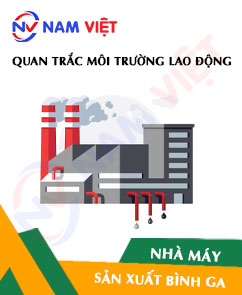
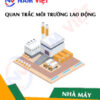
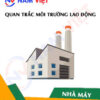
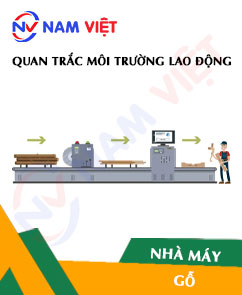
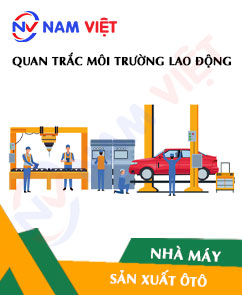

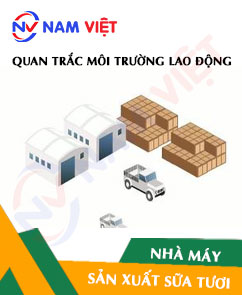
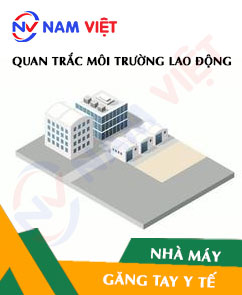
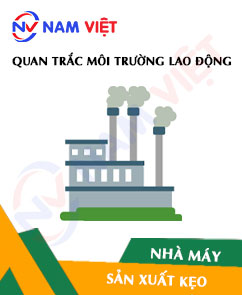

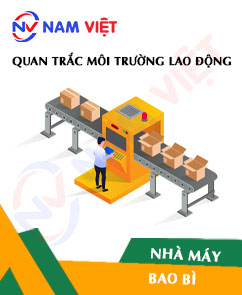
Review Occupational environment monitoring at a gas cylinder manufacturing factory
There are no reviews yet.